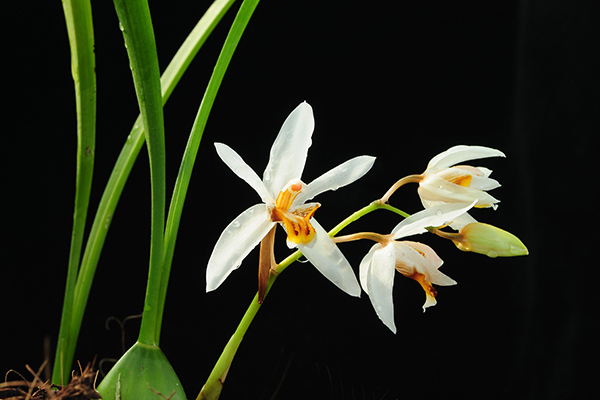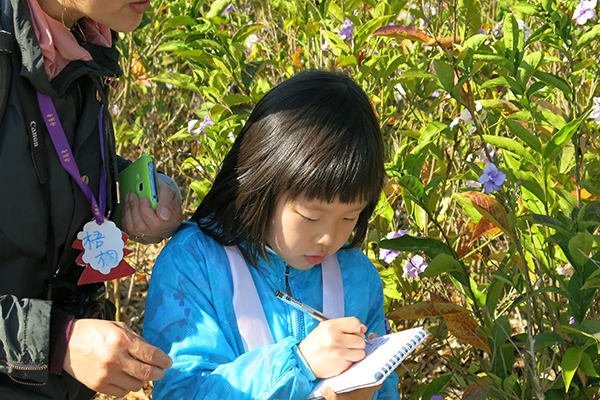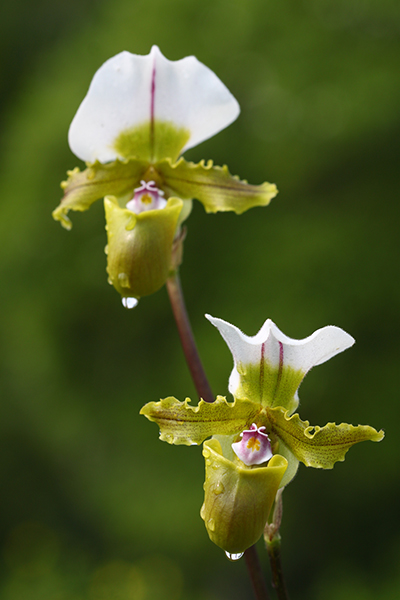-kiiF--600x400@English.gov.cn.jpg)
[Photo/China Daily]
Nature education is new in China, but a start has been made by some individuals and NGOs. They are reaching out to students, especially. Xishuangbanna Tropical Botanical Garden is a leading light in this new field of endeavor.
Many people know and have been to Xishuangbanna Tropical Botanical Garden because the garden, nestled on a river island near the small town Menglun, has been one of the major tourist attractions in the prefecture in Yunnan province.
However, few know that under the charge of the Chinese Academy of Sciences, it is one of the country’s best botanical gardens known for its research and conservation of tropical plants. Fewer know that along with the rise of Chinese people’s environmental awareness, it has become one of the country’s strongholds to promote nature education.
According to the garden’s 2014 annual report, about 2,500 students from all over the country participated in winter and summer camps held in XTBG, including 22 inquiry-based learning camps and 16 nature experience camps.
“It’s not just because it is located in a tropical region that our garden is rich in biodiversity and beautiful all year round,” says Wang Ximin, head of XTBG’s nature education team. “It’s mainly because we have the capacity to cater to students’ need for scientific and nature education.”

[Photo/China Daily]
“With XTBG, what’s so great about nature education is the scale in which things can happen, because of the amazing capacity here with all the scientists, the size of the garden and facilities available,” says Sophie Williams, a lecturer in conservation science at Bangor University, in North Wales, the United Kingdom, who is doing research related to nature education at the garden for half a year, every year, since 2013.
“Thousands of students coming from some of the big cities to stay here to learn about the natural environment, learn about how science works and about the importance of plants and animals.”
Once, He He, a member of Wang’s team, asked her to give a presentation to some of the winter camp students, she recalls. “I was expecting maybe 10, 15 students. But He He said no, no, there are 100 students coming. So the scope in which things happen here is phenomenal. It means we can have a great impact.”
At the garden, botanists give lectures on nature and scientists’ lives to students; PhD and graduate students guide middle or high school students in some trial experiments in their laboratories. Wang, an US-educated nature education expert, guides students for “night hikes” in the garden from time to time.

Students from a Xishuangbanna kindergarten visit the botanical garden.[Photo/China Daily]
Night hike
“Night hike” is one of the key nature education programs promoted in the botanical garden, especially in the summer, Wang says.
As a major designer of the program, Wang gave a training course to nearly 30 tour guides of the garden in late May, at the beginning of the firefly season. “Firefly watching is a selling point of our night tour,” Wang tells China Daily in a meeting room for the training.
According to him, it takes about two hours for a typical night hike. Participants-not only children and students, but also their parents or other adult tourists-will have the chance to view about 10 unique tropical plants, some of which will emit a special fragrance to attract insect pollinators or start blooming at night; listen to several species of owls and frogs’ callings; watch thousands of fireflies giving off flashes of light; and enjoy the Milky Way on a large lawn.
As a part of the training of the guides, who are all women from nearby Menglun township, Wang briefs them details in preparation for the tour, such as covering their flashlights with red cloth so that the light doesn’t disturb the wildlife, not telling children scary stories during the tour, and bringing mosquito sprays in case visitors need them.
After the training, Wang and He He lead the guides to have a quick night hike in the garden. They stop at various sites and discuss how to separate different tour groups by guiding them along different routes.
“A guide can earn 100 yuan ($16) for a night hike,” Wang says. “We have trained them every year and also encouraged them to learn more about the garden’s fauna and flora so that they can provide better service to our visitors.”
Because of their work, the night hike has become a popular program for visitors.
Han Minzhu, a 7-year-old student from a primary school in Jinghong, the major city of Xishuangbanna, went with her mother Li Yuanding for a night hike recently, together with dozens of her classmates and their parents. The hike was part of a nature-experience weekend in the botanical garden organized spontaneously by the students’ parents.
During the hike, which took one and a half hours, the girl was impressed by the flowers of konjac, which “stank”. She saw bats preying in the night sky and heard the calling of a barn owl.
“Our children grew up in cities and have few opportunities to stay out in the wild at night,” Li says. “So we truly enjoy the tour a lot.”
The following morning, Wang gave the students a lecture on how to keep a nature journal-specifically on leaves. After the class, the students had time to wander around the botanical garden to take down notes in their journals.

A student takes notes on her ‘nature journal’ during a nature education tour in the garden.[Photo/China Daily]
Local communities
Wang and his team have specially targeted children from the local communities in Xishaungbanna.
“While I started working with XTBG in 2010, I found that many local children hadn’t been to our garden or had but just had a quick tour,” he says. “They had little knowledge of the region’s rich biodiversity and conservation.”
So Wang and his colleagues began holding exhibitions and giving lectures to students at Menglun Primary School and trained some of the students to be “young volunteer guides” of the garden. “We trained 10 of them in a session,” Wang says. “The children were enthusiastic.”
They have given a total of 20 popular science lectures, once a month, in the school since 2010.
“Originally, we wanted to give lectures to students from one class so that we could monitor their changes during the years,” Wang said. “But the school teachers thought the chance should be shared by all students.”
XTBG has also established a similar relationship with Jinghong Xiaojie Central Primary School, a country school with about 2,000 students, of which more than 70 percent are from different ethnic minority groups, since October 2013.
Botanists from the garden helped the school build a native tree nursery in 2014. Wang and his colleagues helped the school establish a nature club among its students in the fourth grade and regularly gave students lectures on biodiversity conservation. In May, 2015, members of the club were invited to join in XTBG’s ecological restoration project-planting 67 species of native trees on a “holy hill” of the Dai ethnic group at Manyangguang village, which is located near the school.
“The nature club has about 30 members, who have more chances to visit the botanical garden, use binoculars and insect collecting equipment provided by the garden and participate in some nature education programs,” says Rao Xinming, vice-principal of the school. “The students were so keen to join the club, we had to pick those based on their performance in science courses.”

Zhang Xin, an 11-year-old girl of the Hani ethnic group, feels lucky to be a member of the club, because only four other students from her class are in it. She says she enjoys visiting the botanical garden to see dancing grass and all kinds of flowers. “Through activities with our club, I know many animals and birds are going extinct because of hunting,” she says.
Her grandfather loves hunting and still goes hunting from time to time, she says. “He will leave in the afternoon and return the next morning. He shoots everything-wild pheasants, cuckoos, hoary bamboo rats, and civet cats. My father and I asked him not to go, but he turned a deaf ear to us. Back home, all Hani families have guns.”
In 2014, more than 1,000 students from Xishuangbanna participated in nature education activities, XTBG director Chen Jin points out. A total of 10 nature clubs were established in 10 local schools. “We gave each school five nature observation bags, containing things like binoculars and insect collecting equipment,” the professor says. “A bag is worth about 2,000 yuan.”
According to Sophie Williams, one of her master students asked pupils in a primary school in Xishuangbanna to draw a forest of their imagination. “Children who are involved with nature education programs drew different species of trees,” says the teacher. “Children who weren’t involved drew rubber trees. So the understanding of what a forest is, is different. Potentially, we can use nature education to show children that a forest has a lot of species.”
Advanced training course
Williams and Wang Ximin are two lecturers of “advanced nature education research training course” initiated by the Chinese Union of Botanical Gardens and held annually in XTBG since 2013. The union was officially launched in June 2013, with its secretariat based in XTBG and Professor Chen Jin as the present chairman.
The two-week training was targeted at people who are involved in nature education from botanical gardens, NGOs and universities, Chen says. “A session will have about 30 participants,” he says. “We invite nature education experts from all over the world to teach them techniques to deliver innovative nature education and ways to design and evaluate nature education programs.”
In August, he says, the third session of the training will invite experts from Mongabay.com, one of the world’s most popular environmental science and conservation news sites, to give lectures on nature education.
“Through efficient environment education to build up a long-term partnership with local communities, we can help these communities’ ecological restoration,” Chen says. “By focusing on conservation, we could develop XTBG into a conservation leader in the whole (Asian tropical) region and a model for the world’s new botanical gardens.”
